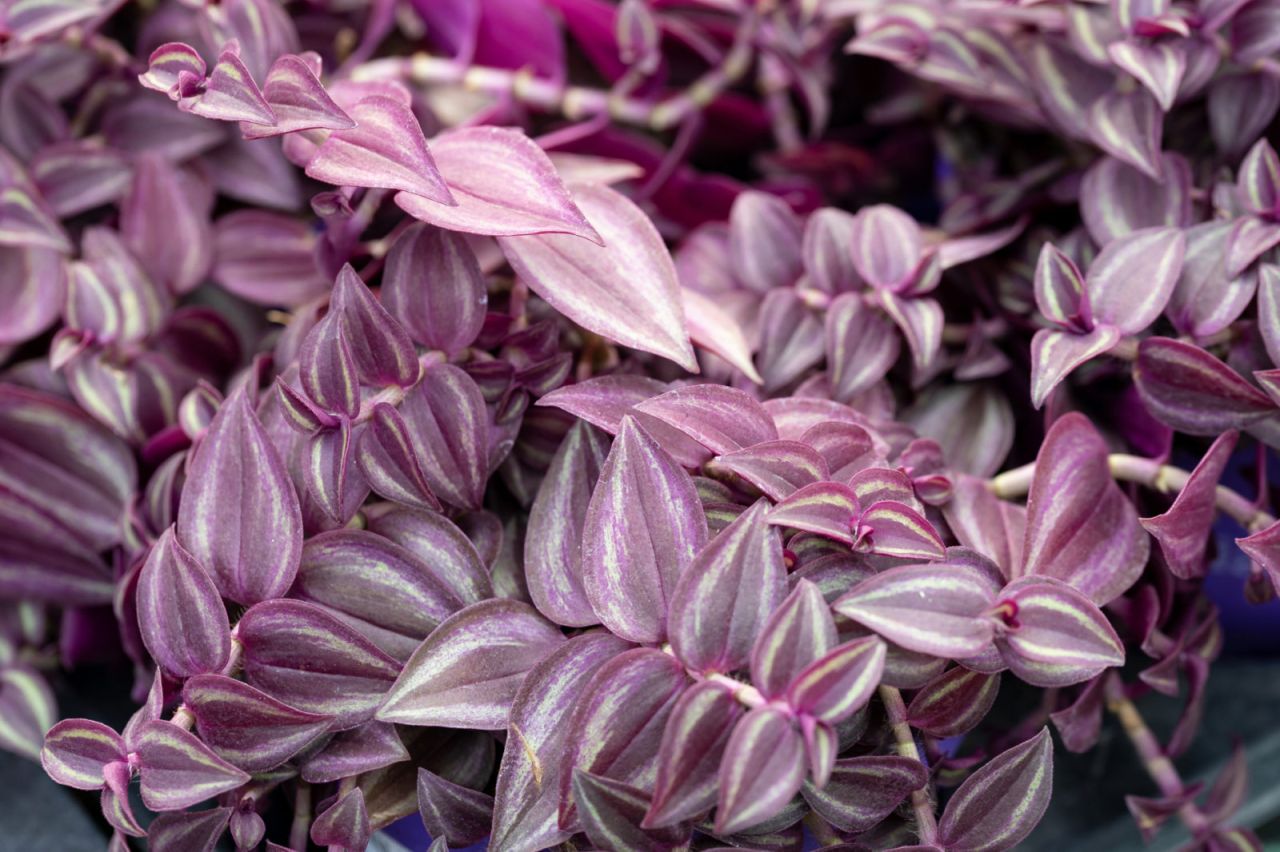Add A Pop Of Color To Your Home With Gorgeous Plants Sporting Purple Leaves!

House Plant with Purple Leaves: A Colorful Addition to Your Indoor Garden
When it comes to house plants, there are countless options to choose from. Each plant has its own unique features and benefits. If you’re looking for a vibrant and eye-catching addition to your indoor garden, a house plant with purple leaves might be just what you need. In this article, we will explore the meaning of purple leaves in plants, how to care for them, and some popular varieties known for their stunning purple foliage.
What do we mean by house plant with purple leaves?
When we refer to a house plant with purple leaves, we are talking about plants that have foliage in varying shades of purple. These plants are highly sought after for their aesthetic appeal and ability to add a pop of color to any space. The purple coloration can range from deep and dark hues to lighter shades, giving you plenty of options to choose from based on your preferences.
How to care for house plants with purple leaves?
While each plant has its own specific care requirements, there are some general guidelines to follow when it comes to caring for house plants with purple leaves. Here are some essential tips:
1. Light: Most plants with purple leaves thrive in bright, indirect light. However, some varieties can tolerate lower light conditions. It’s important to research the specific needs of your plant to ensure it receives the right amount of light.
2. Watering: Like any other house plant, proper watering is crucial for the health of plants with purple leaves. Always check the moisture level of the soil before watering and avoid overwatering, as it can lead to root rot and other issues.
3. Humidity: Many plants with purple leaves prefer higher humidity levels. Consider using a humidifier or placing a tray filled with water near your plant to create a more humid environment.
4. Fertilization: Regular fertilization can promote healthy growth and vibrant foliage. Choose a balanced, water-soluble fertilizer and follow the instructions on the packaging for the best results.
5. Temperature: Most house plants with purple leaves thrive in temperatures between 60°F to 75°F (15°C to 24°C). Avoid exposing them to extreme temperature fluctuations and drafts.
What is known about house plants with purple leaves?
House plants with purple leaves have gained popularity not only for their visually appealing foliage but also for their potential health benefits. It is believed that certain plants with purple pigmentation contain higher levels of antioxidants, which can help improve indoor air quality and potentially have positive effects on human health.
Additionally, the purple coloration in plants is often associated with a sense of calmness and tranquility, making them perfect for creating a relaxing atmosphere in your home or office space.
Solution: Popular house plants with purple leaves
If you’re ready to add a touch of purple to your indoor garden, here are some popular house plants known for their stunning purple foliage:
1. Purple Heart (Tradescantia pallida): This trailing plant features long, purple leaves that add a graceful touch to any hanging basket or shelf. It is relatively easy to care for and can tolerate a variety of light conditions.
2. Persian Shield (Strobilanthes dyerianus): With its metallic purple leaves and silver markings, the Persian Shield is a real showstopper. It prefers bright, indirect light and requires higher humidity levels.
3. Purple Passion (Gynura aurantiaca): Also known as Velvet Plant, this house plant has fuzzy, deep purple leaves that provide a unique texture to your indoor garden. It thrives in bright, indirect light and requires regular pruning to maintain its compact shape.
4. Purple Shamrock (Oxalis triangularis): The Purple Shamrock is prized for its triangular, purple leaves that fold up at night and reopen during the day. It prefers bright, indirect light and well-draining soil.
5. Wandering Jew (Tradescantia zebrina): This popular trailing plant features striking purple and silver striped leaves. It is easy to care for and makes a great addition to hanging baskets or as a ground cover.
Conclusion
Adding a house plant with purple leaves to your indoor garden can instantly elevate the visual appeal and create a calming atmosphere. By following the proper care guidelines, you can ensure the health and longevity of your purple-leafed plants. With a variety of stunning options available, you can find the perfect plant to suit your style and preferences. So why wait? Start exploring the world of house plants with purple leaves and bring a touch of nature’s beauty indoors.
FAQs (Frequently Asked Questions)
1. Can house plants with purple leaves survive in low light conditions?
While some varieties can tolerate lower light conditions, most house plants with purple leaves prefer bright, indirect light for optimal growth and coloration. It’s best to research the specific needs of your plant to provide it with the right amount of light.
2. Are house plants with purple leaves safe for pets?
While many house plants are safe for pets, it’s essential to research the toxicity of each specific plant before bringing it into a pet-friendly environment. Some plants with purple leaves may be toxic to cats, dogs, or other animals if ingested.
3. How often should I water my house plant with purple leaves?
The watering frequency for house plants with purple leaves can vary depending on factors such as the plant’s size, potting mix, and environmental conditions. It’s best to check the moisture level of the soil regularly and water when the top inch feels dry. Avoid overwatering, as it can lead to root rot and other issues.
4. Can I propagate house plants with purple leaves?
Yes, many house plants with purple leaves can be propagated through various methods such as stem cuttings, division, or leaf cuttings. Research the specific propagation techniques for your plant to ensure successful propagation.
5. Are there any special considerations for fertilizing house plants with purple leaves?
House plants with purple leaves can benefit from regular fertilization to promote healthy growth and vibrant foliage. Choose a balanced, water-soluble fertilizer and follow the instructions on the packaging for the recommended dosage and frequency of application. Avoid overfertilizing, as it can lead to nutrient burn and other issues.

I am a beginner writer who continues to learn and consistently creates informative articles to express the ideas that I master.